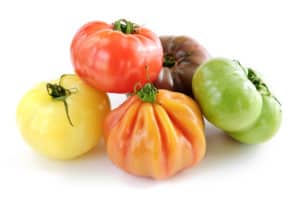Carrots, with their vibrant orange color and sweet, crisp texture, are a staple in many dishes. If you’re a Florida gardener, you might be wondering how to successfully cultivate these root vegetables in the Sunshine State. In this comprehensive guide, we’ll delve into the intricacies of growing carrots in Florida, addressing the unique challenges and opportunities that the state’s climate presents. From choosing the right carrot varieties to planting, caring for your crop, and managing pests and diseases, we’ve got your back on your journey to a flourishing carrot harvest under the Florida sun.
Contents
Choosing Carrot Varieties
Considerations for Florida’s Climate
Florida’s warm temperatures and high humidity can pose challenges for carrot cultivation, but the right choice of carrot varieties can make all the difference. Consider the following factors:
- Heat Tolerance: Opt for carrot varieties that are heat-tolerant, such as ‘Bolero’ and ‘Little Finger.’ These varieties are better equipped to thrive in Florida’s warm climate.
- Resistance to Bolting: Carrots are more likely to bolt (produce flowers and seeds prematurely) in hot weather. Look for varieties that have a reputation for resisting bolting.
- Shorter Maturation: Choose carrot varieties with a shorter time to maturity to ensure you can harvest your carrots before the intense summer heat.
Soil and Sun Requirements
Successful carrot cultivation in Florida begins with suitable soil and sun conditions:
- Well-Draining Soil: Carrots require well-draining soil to prevent waterlogged roots. Amend heavy soils with organic matter like compost or peat moss to improve drainage.
- Full Sun: Carrots thrive in full sun, but they can tolerate some afternoon shade in Florida’s scorching summers. Aim for at least 6 to 8 hours of sunlight daily.
Planting and Care
Planting Season
Timing is crucial when planting carrots in Florida. The state’s regions may have slightly different planting schedules due to variations in climate:
- North Florida: Plant carrots in the fall for a winter harvest or in early spring for a late spring/early summer harvest.
- Central Florida: Carrots can be grown in both the fall and spring, with staggered plantings for a continuous harvest.
- South Florida: Due to the tropical climate, carrot cultivation is challenging in the summer. Focus on growing carrots in the cooler months of fall and winter.
Watering and Fertilization
Florida’s heat and sporadic rain patterns necessitate careful watering and fertilization:
- Consistent Moisture: Carrots require consistent moisture to prevent cracking and promote even growth. Use a drip irrigation system or water deeply and evenly to keep the soil consistently moist.
- Organic Fertilizers: Opt for organic fertilizers that release nutrients slowly, reducing the risk of over-fertilization and nutrient runoff into the water table. Compost or well-rotted manure are excellent choices.
Pest and Disease Management
Florida’s humid climate can attract various pests and diseases that affect carrot crops. Here’s how to manage them naturally:
- Common Pests: Keep an eye out for aphids, nematodes, and carrot rust flies. Planting companion plants like marigolds can help deter pests.
- Disease Prevention: Practicing crop rotation and maintaining good garden hygiene can help prevent diseases. Avoid planting carrots in the same location year after year.
Harvesting and Storage
Harvesting Timeframe
Knowing when to harvest your carrots is crucial for the best flavor and texture:
- Maturity Indicators: Carrots are typically ready for harvest when they reach their mature size, usually around 1 inch in diameter. Gently pull them from the soil, taking care not to damage the roots.
Storage Tips
Proper storage ensures your freshly harvested carrots stay fresh and delicious:
- Refrigeration: Store your harvested carrots in the refrigerator crisper drawer. Place them in a plastic bag with some moisture to maintain crispness.
- Freezing or Canning: If you have excess carrots, consider freezing or canning them to preserve their freshness for an extended period.
Conclusion
Cultivating carrots in Florida’s unique climate may present some challenges, but armed with the right knowledge and techniques, you can enjoy a bountiful harvest of these delicious root vegetables. By selecting the right carrot varieties, preparing the soil, timing your plantings, and implementing proper care and pest management strategies, you can savor the taste of your own homegrown Florida carrots. So, roll up your sleeves, embrace the warmth of the Florida sun, and embark on a rewarding journey to grow the tastiest carrots you’ve ever had. Your garden will thrive, and your taste buds will thank you.



